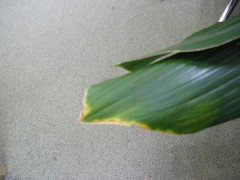Iron Plant - long and windy, so grab a cup of coffee
ssuarkc
11 years ago
Featured Answer
Comments (17)
Tiffany, purpleinopp Z8b Opp, AL
11 years agorestoner
11 years agolast modified: 9 years agoRelated Professionals
Tomball Landscape Architects & Landscape Designers · Paradise Landscape Architects & Landscape Designers · Elgin Landscape Contractors · Stoughton Landscape Contractors · Bell Gardens Landscape Contractors · Bloomington Landscape Contractors · Brockton Landscape Contractors · Englewood Landscape Contractors · New Brighton Landscape Contractors · Newnan Landscape Contractors · West Chicago Landscape Contractors · White Bear Lake Landscape Contractors · Bensenville Landscape Contractors · Ogden Interior Designers & Decorators · Tahoe City Interior Designers & Decoratorsplantsaremylife_grow
11 years agolast modified: 9 years agoUser
11 years agolast modified: 9 years agoflora_uk
11 years agolast modified: 9 years agossuarkc
11 years agolast modified: 9 years agonicoblue74
11 years agolast modified: 9 years agoThe Ficus Wrangler
11 years agolast modified: 9 years agossuarkc
11 years agolast modified: 9 years agopirate_girl
11 years agolast modified: 9 years agoThe Ficus Wrangler
11 years agolast modified: 9 years agoWork123
10 years agolast modified: 9 years agoThe Ficus Wrangler
10 years agolast modified: 9 years agoThe Ficus Wrangler
10 years agolast modified: 9 years agopetrushka (7b)
10 years agolast modified: 9 years agokimberlypadgham
6 years ago
Related Stories

ECLECTIC HOMESHouzz Tour: Wild Ideas in the Windy City
When bold art meets great architecture and interior design, something wonderful happens
Full Story
LIFEHow Do You Make Your Tea and Coffee in the Morning?
A morning cup is a must for many, and preparation comes in many guises. We look at coffee and tea habits across the Houzz community
Full Story
PETSSo You're Thinking About Getting a Dog
Prepare yourself for the realities of training, cost and the impact that lovable pooch might have on your house
Full Story
DECORATING GUIDESSo Your Style Is: Black, White and Read All Over
Make headlines at home with newsworthy decor
Full Story
KITCHEN DESIGNToday’s Coffee Stations Have All Kinds of Perks
Some of these features are so over the top that they will give you a jolt
Full Story
HOUSEPLANTS8 Essentials for Healthy Indoor Plants
Houseplants add so much to our homes — and can thrive when grown in the right conditions. Keep these tips in mind
Full Story
DIY PROJECTSNeat Little Project: Make a Basic Wood Stand
See how to make this handy table to hold your book, coffee or plant — then use the skills you learn to build something else later
Full Story
PRODUCT PICKSGuest Picks: Loving Linen All Over the Home
Charmingly rumpled or ironed smooth, these linen finds from napkins to curtains bring casual elegance to rooms
Full Story
GARDENING AND LANDSCAPING10 Great Outdoor Chill Zones
Whether you have a huge poolside deck or a sliver of a patio, these ideas will kick stress to the curb all summer long
Full Story
DECORATING GUIDESThe Mightiest Little Table You'll Ever Have
It slips suavely into a corner, assists a coffee table with ease and makes a strong style statement. Meet the superuseful drink table
Full Story








ssuarkcOriginal Author